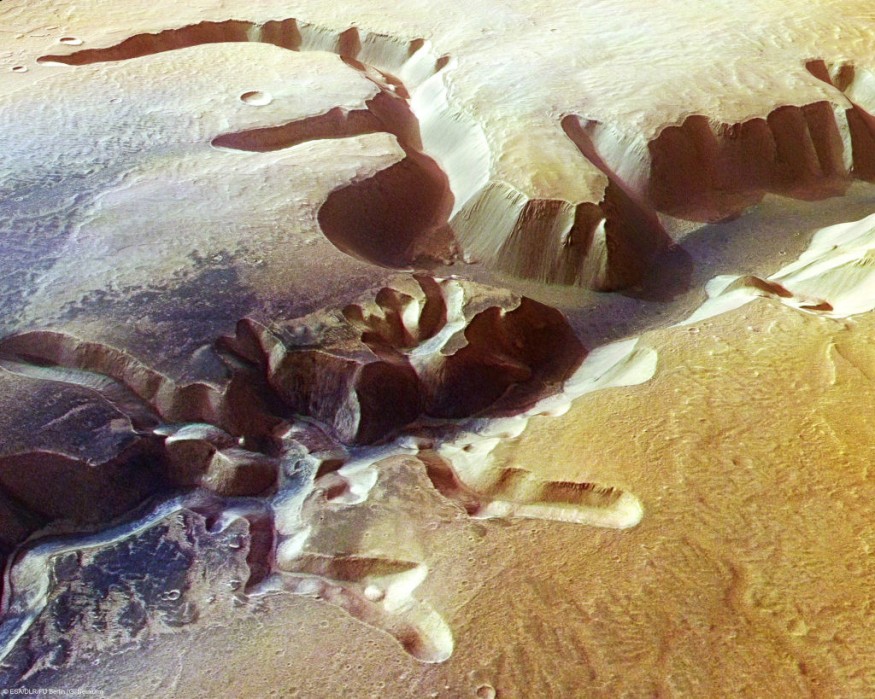Thousands of trails left by sliding rocks have been discovered by scientists.
As humanity becomes more interested in the Red Planet and seeks to establish colonies there soon, these boulder trails can detect recent seismic activity on the planet.
Researchers detailed their study, titled "Boulder Fall Ejecta: Present Day Activity on Mars," in Geophysical Research Letters.

Bouncing Boulder Linked To Marsquakes
These boulder trails disintegrate every two to four Martian years (four to eight Earth years), although they rarely remain on Earth. These ejections and traces can be utilized to identify extremely recent planetary surface activities, including Marsquakes.
When a boulder falls, the regolith (Martian surface material) on the surface is flung out in a different pattern with each bounce. Wion News said these patterns seem V-shaped on Mars, with the spread pointing downslope and non-uniform spacing between each bounce. Bounce-to-bounce and boulder-to-boulder, the spatial dispersion of BFE changes.
The bouncing boulders create herringbone-like patterns of footprints on the surface. Around 4,500 of them have been discovered along the almost 900-kilometer length of the surface. The Cerberus Fossae region is home to about 30% of these ejections, indicating one of Mars' most seismically active areas.
The researchers, led by Vijayan, looked at hundreds of photos taken by the High-Resolution Imaging Science Experiment (HiRISE) camera onboard Nasa's Mars Reconnaissance Orbiter from 2006 to 2020. They discovered distinct tracks all around the earth, indicating recent activity.
Bouncing Boulders Continue To Change Directions
Dr. Vijayan told The New York Times that the boulder footprints periodically change direction and that new tracks occasionally split out. Such shifting trails are likely evidence of a rock disintegrating in the middle of its fall and its progeny continuing to bounce downslope.
Approximately one-third of the tracks examined by the researchers were not visible in early photographs, suggesting that they had originated after 2006. A chevron-shaped mound of Martian regolith frames the bounce marks of all of these nascent footprints. According to the researchers, this debris, dubbed "boulder fall ejecta" by Dr. Vijayan and his colleagues, is ejected every time a boulder collides with the surface.
Because boulder fall ejecta fades so quickly, the team believes that spotting it indicates that a rock was just removed. Seismic activity is a common cause of rockfalls on Earth and beyond.
Dr. Vijayan and his team hope to expand their research to the polar areas of Mars in the future. Although the HiRISE camera is well over its planned life, Dr. McEwen believes it will perform well.
RELATED ARTICLE : NASA InSight Mars Lander Detects 3 Massive Earthquakes in Red Planet, Records Strongest Marsquake at 4.2 Magnitude
Check out more news and information on Space in Science Times.










